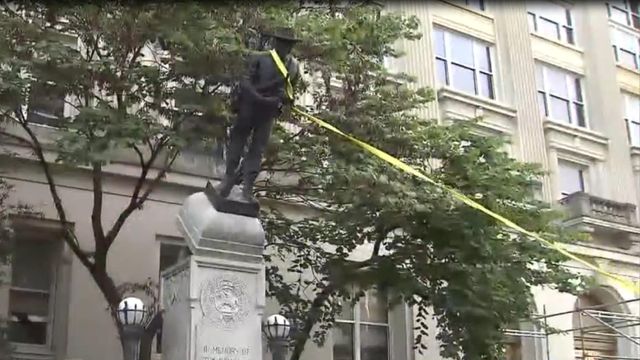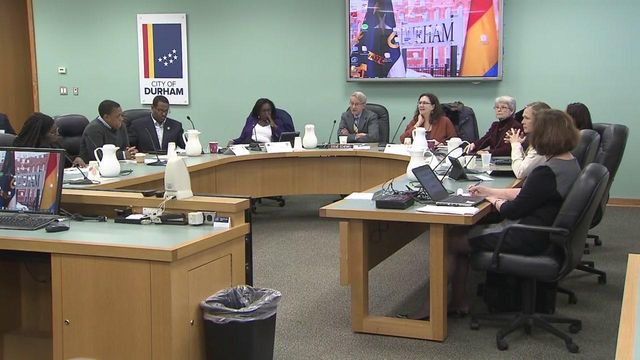Durham's toppled Confederate statue should be displayed, advisory panel says
A mangled Confederate statue that was toppled by protesters in Durham in 2017 should be displayed in its current state inside a downtown building and its granite pedestal be turned into public art that also honors area residents who backed the Union during the Civil War, according to an advisory committee appointed by city and county leaders.
Posted — Updated"It is just not salvageable, but it is a historical artifact of the times when it was created and, in its current state, is a historical artifact of how it came down," Kirk said. "It has additional meaning, in other words, in its current state and helps us to illuminate the entire history of the statue and of this debate in Durham."
Moving the statue inside the old county courthouse – it used to stand outside the building – would preserve a piece of local history without forcing people to pass by it every day if they don't want to, she said.
"The statue in its current state will continue to be a challenging object," she said.
The interior location also should include information to add historical context to the monument, she said.
The empty pedestal could continue to honor those who fought for the Confederacy, but the committee wants to add a pillar honoring slaves and a pillar honoring Union veterans from the Durham area, Kirk said.
The additions would create "a new piece of public art that creates a more holistic understanding of the experience of the Civil War in Durham," she said, adding that the Unity Monument at Bennett Place Historical Site could provide a model for the new work.
Commissioner Ellen Reckhow questioned the legality of adding information to an existing monument and said the county attorney should look into it.
"It's a little gray," Kirk replied. "The law does not really respond to instances where there's been damage."
Eventually, if allowed by state law, the committee recommended that the pedestal and any updates to it should be moved to one of two city-owned cemeteries: Maplewood or Beechwood.
Commissioner James Hill and City Councilwoman DeDreana Freeman balked at putting a Confederate pedestal in the historically black Beechwood Cemetery, calling the idea offensive.
"You can't be serious," Hill said. "That's like having a statue for the [Nazi] Wermacht or the SS moved to a Jewish cemetery. That is the most offensive thing I've heard today. I can't believe that that would even be pushed."
Kirk said the "memorial to people who died" in the Civil War would include the pillars for Union soldiers and slaves.
"Many people who communicated with our committee feel very strongly that their sacrifice, for whatever reason, is important," she said. "We felt that whatever the final installation is would need to be moved to a place where the dead are honored."
Freeman demanded an apology from Kirk and other committee members for what she saw as "an oversight" in suggesting the Confederate monument's pedestal be placed in Beechwood Cemetery.
"It was inappropriate to suggest that Beechwood would be that location," she said.
"I can't apologize for what's in the report," Kirk said.
Raul Jimenez, one of the protesters charged with tearing down the statue, said he doesn't support the committee's recommendations.
"What should happen is, that statue should be thrown in the trash – what's remaining of it," Jimenez said. "Even in this recommendation, the historical context about how it came down, we don't need to see that statue. That statue was taken down to be taken to the trash."
The final decision on what to do with the statue will be up to county officials. No vote has been scheduled.
"With this process and this report, Durham can be a role model for other communities throughout this country," Board of Commissioners Chairwoman Wendy Jacobs said. "Durham has shown that we can face difficult issues, we can come together as a community, we can listen to each other and we can find a way forward together."
Related Topics
• Credits
Copyright 2024 by Capitol Broadcasting Company. All rights reserved. This material may not be published, broadcast, rewritten or redistributed.






